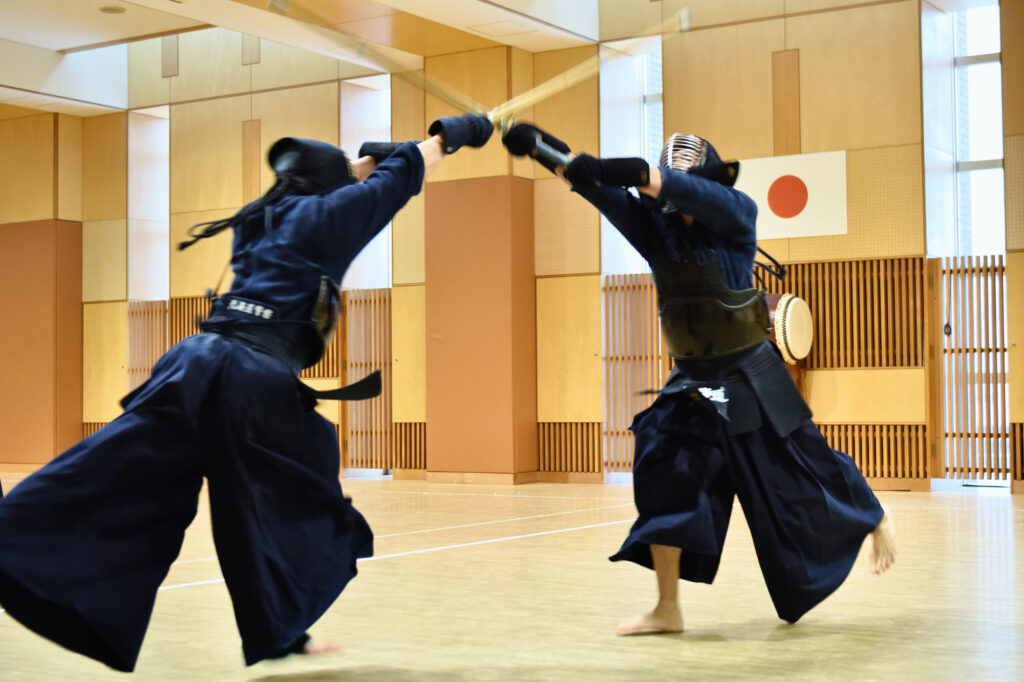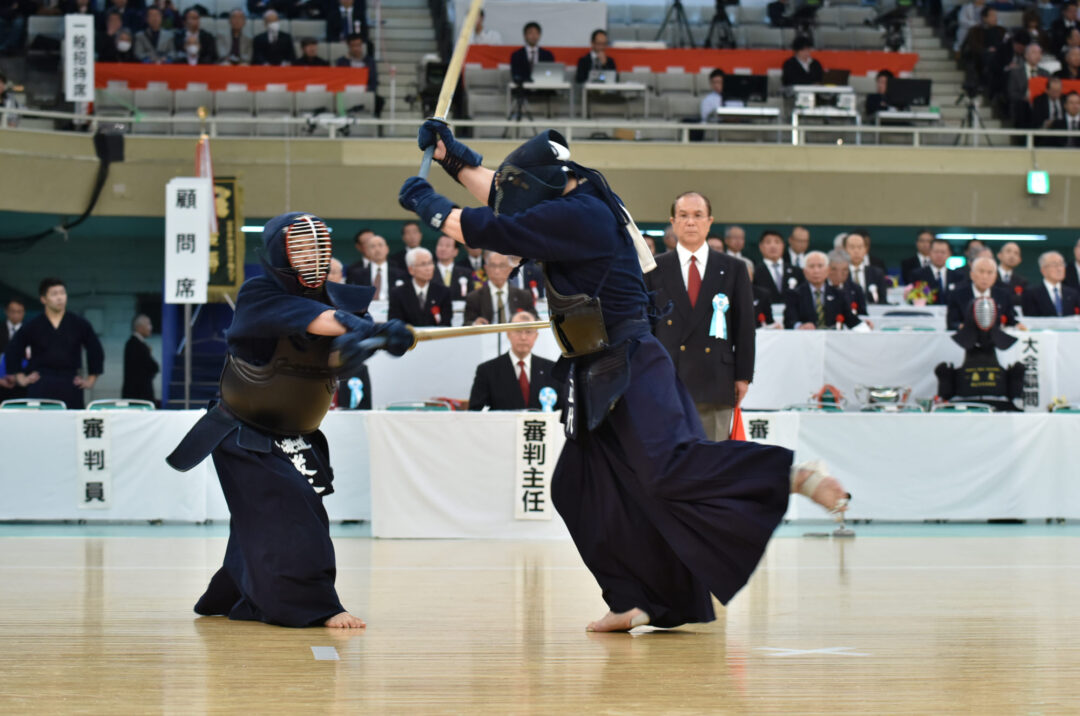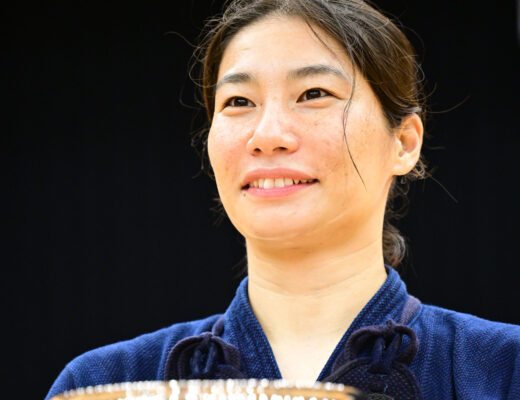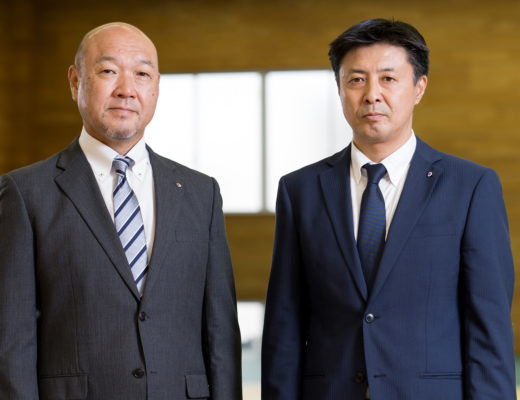2022.2 KENDOJIDAI
Translation: Pepijn Boomgaard
When repeatedly doing Kihon practice, it is essential to improve the quality of your Keiko. Keiko should not only be done as a force of habit. However, when practicing every day, it is easy to “just practice”.
We asked young Kenshi from all over the country to give some tips on how to improve the quality of practice, focussing on Kirikaeshi.
Adjust intensity to the level of proficiency.

Born in 1984 in Shintotsukawa, Hokkaido prefecture. Went to Tokai University Sapporo Senior High School and International Budo University. After graduation, he went on to join the Hokkaido Prefectural Police. His achievements include participating in the All Japan Championship, All Japan Tozai-Taiko Championship, and the National Sports Festival, and getting third place in the All Japan Police Tournament team competition. Currently, he is an assistant professor at the Hokkaido Police Academy. Kendo Renshi 6th Dan.
I have been doing Kendo for 30 years. Currently, I am involved in teaching Kendo to children and leading kendo classes at the police academy. At the beginning and end of each practice session, we, myself included, always do Kirikaeshi. The reason why I place importance on Kirikaeshi is that it teaches correct posture and Kamae, Hasuji and Tenouchi, Ashisabaki, Maai, and breath control. It also helps with the development of other Kendo essentials such as physical strength and vigor, and Ki Ken Tai Icchi. In addition, by varying the number of strikes and by doing slow big Kirikaeshi or small fast Kirikaeshi depending on the students proficiency, clear Tenouchi, better Oji-waza, agile footwork and other things can be acquired. I will introduce the different types of Kirikaeshi I did during my Tokuren days, and the benefits of doing them, as well as some things to keep in mind when teaching Kirikaeshi.
Kirikaeshi Variations
Suriashi Kirikaeshi
Single Kirikaeshi (one set of 9 strikes)
Normal Kirikaeshi (two sets of 9 strikes)
Triple Kirikaeshi (three sets of 9 strikes)
Men Uchikomi into Kirikaeshi
Back and forth Kirikaeshi (going back and forth once or twice)
Men-taiatari into Kirikaeshi (doing Men-taiatari 3 to 5 times)
Hitoiki Kirikaeshi (30 to 50 strikes in one go)
Mutual Kirikaeshi
Do Kirikaeshi
We would pick a few of these variations, and practice Kirikaeshi for 15 minutes. During the winter season, when there were few tournaments, we would do all variations, practicing Kirikaeshi for more than 30 minutes in order to improve our skills.
Benefits
First of all, Tenouchi.
During competition, no matter how many times you strike “almost Ippon”, you will still lose if your opponent strikes Yuko Datotsu. In order to go from “almost Ippon” to Ippon, you need good Tenouchi. In order to master Tenouchi, it is important to correctly strike your partner’s Men when performing the left and right Men strikes during Kirikaeshi. By focusing on striking correctly even when I got tired during practice, I naturally added sharpness and clarity to my strikes. This has allowed me to perform Yuko Datotsu and win, even during close matches and Encho.
Second, Ashisabaki.
As I am not very tall, I was often struck by taller opponents when I stopped moving my feet. In order not to stop moving, I felt it was important to acquire fast and light Ashisabaki. In order to develop agile footwork, during “Men Uchikomi into Kirikaeshi” and “back and forth Kirikaeshi”, I tried to be faster than anyone else, and travel a long distance. In cooperation with my Motodachi, I did many repetitions of Kirikaeshi where I focussed on using my feet.
As a result, my footwork has become more agile, and there are less cases of me being struck by a taller opponent when my feet stop moving.
Third, breath control.
By using your Tanden (lower abdomen) to breathe, you can naturally get a correct posture and prevent your Kamae from falling apart, giving you an advantage during Shiai. At police tournaments, we are competing against the best players from all over the country, which can be physically and mentally exhausting. I sometimes lost because I was struck when I ran out of physical and mental energy and I lost my posture or Kamae. In order to acquire endurance, willpower, and better breath control, I focussed on striking as many hits as possible in a single breath when doing Kirikaeshi. As a result, I learned how to use my Tanden to breathe, allowing me to keep my posture and Kamae even during matches that went into overtime. I now feel like I am able to keep my vigor until the end of the match, giving me the competitive edge.
Things to keep in mind when teaching.
The basic principles of Kirikaeshi are to strike big, strong, fast and light. Keeping this in mind, use the variations introduced above in accordance with the practitioner’s Dan grade and situation, and give them suitable goals when performing Kirikaeshi. Students and children who learn how to perform Kirikaeshi correctly at an early stage make rapid progress later on, which once again shows the importance of Kirikaeshi.

Training body and mind through Hitoiki Kirikaeshi
The rest of this article is only available for Kendo Jidai International subscribers!





